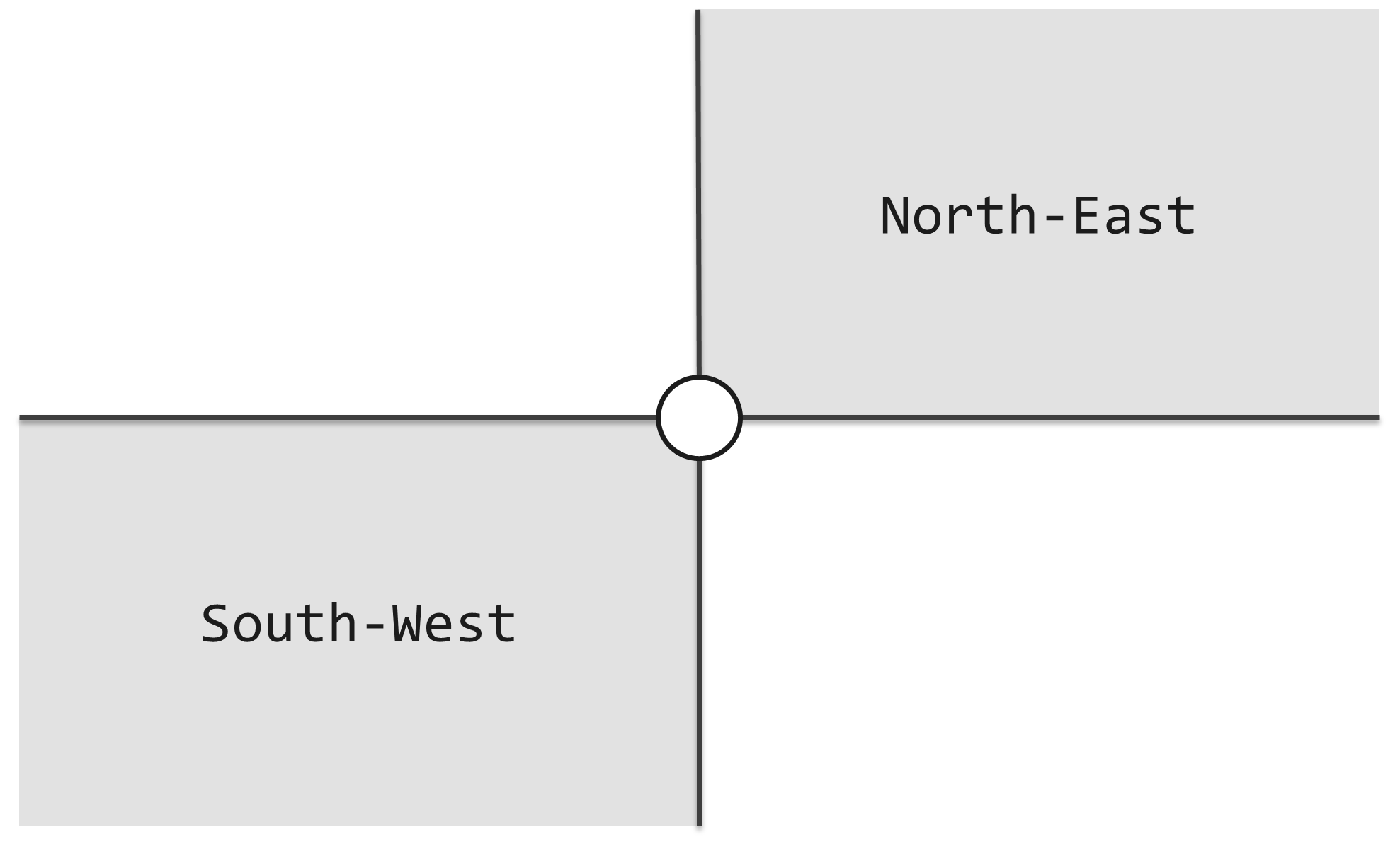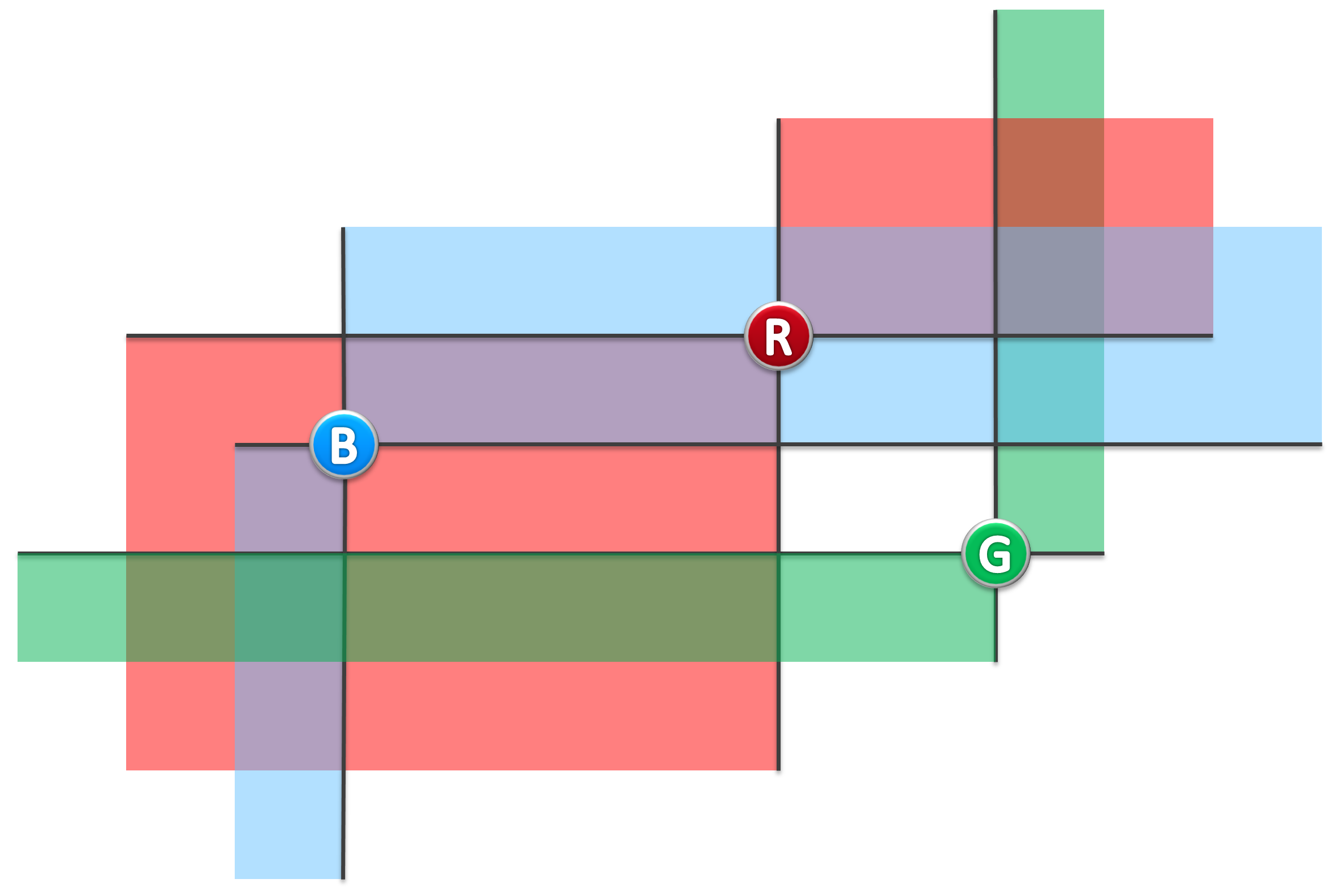本文主要是介绍MOOC数据结构(上)(自主模式)-灯塔(LightHouse),希望对大家解决编程问题提供一定的参考价值,需要的开发者们随着小编来一起学习吧!
灯塔(LightHouse)
Description
As shown in the following figure, If another lighthouse is in gray area, they can beacon each other.

For example, in following figure, (B, R) is a pair of lighthouse which can beacon each other, while (B, G), (R, G) are NOT.

Input
1st line: N
2nd ~ (N + 1)th line: each line is X Y, means a lighthouse is on the point (X, Y).
Output
How many pairs of lighthourses can beacon each other
( For every lighthouses, X coordinates won't be the same , Y coordinates won't be the same )
Example
Input
3
2 2
4 3
5 1
Output
1
Restrictions
For 90% test cases: 1 <= n <= 3 * 105
For 95% test cases: 1 <= n <= 106
For all test cases: 1 <= n <= 4 * 106
For every lighthouses, X coordinates won't be the same , Y coordinates won't be the same.
1 <= x, y <= 10^8
Time: 2 sec
Memory: 256 MB
Hints
The range of int is usually [-231, 231 - 1], it may be too small.
描述
海上有许多灯塔,为过路船只照明。

(图一)
如图一所示,每个灯塔都配有一盏探照灯,照亮其东北、西南两个对顶的直角区域。探照灯的功率之大,足以覆盖任何距离。灯塔本身是如此之小,可以假定它们不会彼此遮挡。

(图二)
若灯塔A、B均在对方的照亮范围内,则称它们能够照亮彼此。比如在图二的实例中,蓝、红灯塔可照亮彼此,蓝、绿灯塔则不是,红、绿灯塔也不是。
现在,对于任何一组给定的灯塔,请计算出其中有多少对灯塔能够照亮彼此。
输入
共n+1行。
第1行为1个整数n,表示灯塔的总数。
第2到n+1行每行包含2个整数x, y,分别表示各灯塔的横、纵坐标。
输出
1个整数,表示可照亮彼此的灯塔对的数量。
样例
见英文题面
限制
对于90%的测例:1 ≤ n ≤ 3×105
对于95%的测例:1 ≤ n ≤ 106
全部测例:1 ≤ n ≤ 4×106
灯塔的坐标x, y是整数,且不同灯塔的x, y坐标均互异
1 ≤ x, y ≤ 10^8
时间:2 sec
内存:256 MB
提示
注意机器中整型变量的范围,C/C++中的int类型通常被编译成32位整数,其范围为[-231, 231 - 1],不一定足够容纳本题的输出。
C++:
95分答案:
/*@Date : 2018-02-05 15:02:45@Author : 酸饺子 (changzheng300@foxmail.com)@Link : https://github.com/SourDumplings@Version : $Id$
*//*
https://dsa.cs.tsinghua.edu.cn/oj/problem.shtml?id=1144
解答:
对于n对灯塔, 先把灯塔们按x坐标排序,然后观察y坐标中有多少逆序对*/#include <iostream>
#include <cstdio>
#include <cstdlib>
#include <cstring>using namespace std;const int maxn = 4000001;const int SZ = 1<<20; //快速io
struct fastio{char inbuf[SZ];char outbuf[SZ];fastio(){setvbuf(stdin,inbuf,_IOFBF,SZ);setvbuf(stdout,outbuf,_IOFBF,SZ);}
}io;struct LightHouse
{int x, y;
} data[maxn];int cmpx(const void *a, const void *b)
{return ((LightHouse *)a)->x - ((LightHouse *)b)->x;
}int cmpy(const void *a, const void *b)
{return ((LightHouse *)a)->y - ((LightHouse *)b)->y;
}int binary_search(LightHouse A[], int l, int h, int value)
{while (l < h){int mi = (l + h) >> 1;value < A[mi].y ? h = mi : l = mi + 1;}return --l;
}long long calc_Inv_y(int start, int stop)
{if (stop - start < 2) return 0;int mid = (stop + start) >> 1;// printf("start = %d, stop = %d, mid = %d\n", start, stop, mid);long long cross = 0;LightHouse *temp = new LightHouse[mid-start];for (int i = start, count = 0; i != mid;)temp[count++] = data[i++];qsort(temp, mid-start, sizeof(temp[0]), cmpy);for (int i = mid; i != stop; ++i){int j = binary_search(temp, 0, mid-start, data[i].y) + 1;cross += j;}delete [] temp;long long left = calc_Inv_y(start, mid);long long right = calc_Inv_y(mid, stop);// printf("left = %lld, right = %lld, cross = %lld\n", left, right, cross);return cross + left + right;
}int main(int argc, char const *argv[])
{int n;scanf("%d", &n);int X, Y;for (int i = 0; i != n; ++i){scanf("%d %d", &X, &Y);data[i].x = X;data[i].y = Y;}qsort(data, n, sizeof(data[0]), cmpx);printf("%lld\n", calc_Inv_y(0, n));return 0;
}
这篇关于MOOC数据结构(上)(自主模式)-灯塔(LightHouse)的文章就介绍到这儿,希望我们推荐的文章对编程师们有所帮助!






